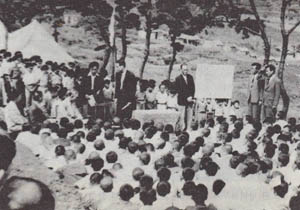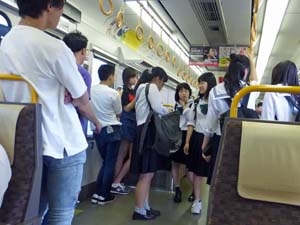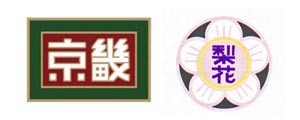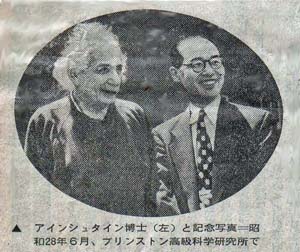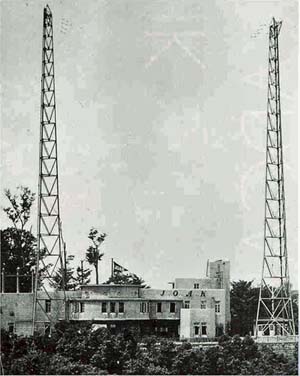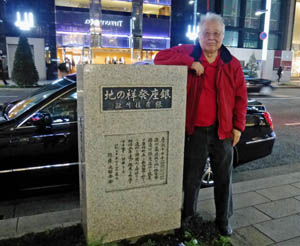| Like to hear some of the old songs? Click here. |
Roofless Factories and
Roofless Classrooms
- Russians are interesting people. Like Korea, Russia has been invaded
many times by foreign powers. Unlike Koreans, they were able to repulse
the invasions without foreign assistance. In this article, I will tell
you first how Russians repulsed Hitler's invasion in the Second World War
(1939-45). I will then discuss whether it has anything to do with Koreans.
- When they were withdrawing from Ukraine during the initial stage of the
War, Russians stripped their Ukrainian tank factories. They took every nut
and every bolt as well as all light and heavy machines from Ukraine to the
places called
Chelyabinsk and
Sverdlovsk deeply hidden in the Ural Mountains.
They started making tanks on open fields, without even roofs to protect workers (mostly women) against rain and snow. The Russian weather is not so friendly during the winter, as you know. Those Russian workers managed to put engines, chains, guns to their tanks, but could not afford to polish their tank surfaces. The tanks from those roofless factories had unfinished surfaces like rocks. Ugly indeed, but they managed to do their job of destroying Hitler's army.
After the War, Russians made better-looking tanks with polished surfaces. Those shiny tanks laughed at their ugly-looking predecessors asked why they are so ugly. Do you think their questions impressed those older tanks with an established battle record?
- In 1972, Korea's
Chung Ju-Yung
started building oil tankers without factory buildings. Tanker hulls
can be constructed like house in the open air, but the engines and other
accessories should bebult in factory buildings. Chung built them in the
open air, and people compare this to Russia's roofless tank factories
during World War II. Korea is now the No. 1 ship-building country in
the world. However, this is a minor story.
- Koreans of my age are tougher than those Russian tanks. We
have built a respectable industrial base after pulling out ourselves
from the chronic poverty and the war devastation. Korea is now one
of the ten richest countries in the world.
- The reason is very simple. Koreans believe in the education of
their children. During the difficult war years, Koreans were very
diligent in educating their young people.
The Korean war (1950-53) lasted during my high-school years (1948-54). I came to the United States in 1954 after high-school graduation, and I received my PhD degrees in 1961. This means that much of my ground work for the PhD degree was done during my high-school years.
Indeed, the mathematics I learned during my my high-school years played the essential role in my research on Einstein. Click here for details.
- From our open-air classes on the mountain side, we were able to see
the harbor of Busan. At 2:00 PM of every day, the harbor bridge
was opening up. When I visited Busan in 2017, I went to that
bridge and I had this photo of myself.
From there, I took a
photo of the mountain where I studied in
my open-air class during the Korean War.
- This bridge connects the main land of the city with an
island called "Yung-Do." This island was sparsely populated, and a number
of Seoul-based schools had temporary campuses there during the Korean War
(1950-53).
Among them were two elite high school for girls. Korean high schools were and still are single-gender schools according to the Confucian doctrine.
- In Seoul, their campuses were near my campus, and I used to see those girls
when I went to school in the morning, and when I went home in the afternoon.
In Busan, those girls were walking in opposite directions in the morning and in the afternoon. We were happy to see them again in Busan. They were wearing school badges like these.
- I met one of those girls in the United States, and she became my wife in 1963.
Here is a collection of her photos.
Even after the mariage, I maintained and still maintain my interest in looking at the girls, and my wife enjoys taking my photos with those girls while travelling. Like to see those photos? Click here.
Y.S.Kim (1995.11.21, rewritten in 2022).
- Thus, during the war years (1950-53), many Koreans in Busan were tuned
to Japanese radio programs from the NHK transmitters in Fukuoka just
across the Korean strait.
- In my case, I had a shortwave radio (Hallicrafters Model S-38) looking like this. I was able to pick up programs directly from Tokyo, and I was able to pick up their radio signals even after we moved back to Seoul in 1953, after the cease-fire agreement was signed in July.

|
|
Why was I so intensely interested in Japan?
- Many of my high school teachers were educated in Japan, and
they talked to us about how they competed with their Japanese classmates.
- We had to rely on old books written in Japanese for high-level
mathematics and science, during my high-school years.
- In 1949, Japan's Yukawa Hideki received the Nobel prize in physics. This inspired many young students in Korea. While developing my own research program after my PhD degree in 1961, I had to go back to Yukawa's papers for the starting point. Click here for the story.
During the Pacific War (1941-45), the B-29 bombers of the US AirForce completely destroyed Japanese cities and Japanese factories. They also destroyed Japanese Kokoro (Hearts and Minds). Yukawa's Nobel Prize started lifting up their Kokoro.
- In 1950, the Korean War started and Americans used Japan as their
logistic base. In Japan, Americans had to refurbish their tanks and military
vehicles abandoned in the Pacific islands during the war. In addition,
Americans had to rebuild the Nissan and Toyota to manufacture trucks for
the Korean army.
The net result was that Japanese started making money and started to become cheerful. During the Korean War (1950-53), while Koreans are suffering, Japanese radio programs were filled with song parties. Ironically, their programs entertained many Koreans who could pick up the radio signals from Japan.
- The Japanese broadcasting system, called NHK (Nihon Hosho Kyokai), had
two different frequencies with two separate programs. One was for the
news and politics, and the other was for education and entertainments.
I learned many things from their broadcasting system, using my shortwave
radio.
Let us hear some of the old Japanese songs which may still be popular among old Koreans.
- Why Japanese songs? Why not Korean songs?
Korea was under Japanese occupation until 1945, and Japanese authorities did not allow Koreans to compose Korean songs. Yet, some anti-Japanese Koreans started writing their songs. However, they were mostly leftists and went to the North and started writing for songs praising Kim Il-Sung and his family. Yet, they developed a very respetable song culturre.
- Let us hear one of their songs.
Click here.
- The same song by a singer in the South? Click here.
- Another video.
- Here is
another video.
- One more.
-
Let us meet again (song from the North).
-
Lee Mi-ja from the South sings the same song.
- Musicians from the South in Pyongyang.
- By 2000, the South became an exellent song producing country in the world. In 2018, a group of singers from the South went to Pyongyang to produce an excellent song party. Let us see this video.
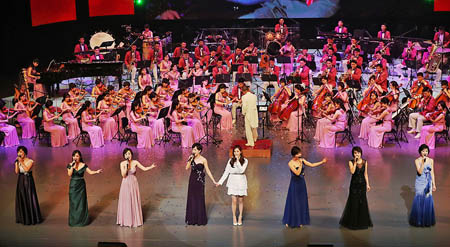
- The North Korean music group (called Samjiyon) performing
in Seoul (2018). Photo by Kim Jin Seok, the photographer of the Presidential
Mansion of the Republic of Korea (South Korea).
Click here for more about this music group.
- Let us hear one of their songs.
Click here.
- Thus, it took some years for Koreans in the South to develop their songs. Only
after 1960, Koreans in the South started producing their own songs. Koreans are song-loving
people, and Korea is now one of the most song-rich countries in the world.
We can mention Lee Mi-Ja
and Patti Kim as
the two pioneering singers in the 1960s.
- Let us hear one of Patti Kim's songs.
Click here.
- Let us hear one of Lee Mi-ja's songs. Click here.
Indeed, these two ladies served as the pioneers in Korean songs in the 1960s.
- Let us hear one of Patti Kim's songs.
Click here.
- In addition, the Chinese song entitled "Le Lai Xiang" (Night Primrose).
This song was very popular in China, Japan, and Korea.
-
Let us hear the song first.
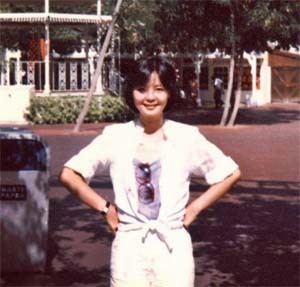
-
Teresa Teng was a distinguished Taiwanese singer born in 1953.
She went to Japan often and sang many songs in Japanese.
- She sang
one of the Korean songs
in Japanese in Japan.
She of course sang many songs in Chinese while in Japan. She sang the Lei Lai xiang very beautifully.
- Yamaguchi Yoshiko (Japanese singer) sings the same song. She is known as Li Xiang-Ran in China, and as Yi Hyang-Ran in Korea.
-
Let us hear the song first.
- Korean Creativity. Koreans in the South added creativity to some of the existing popular songs.
Among them were
-
Lei Lai Xiang. Koreans added a group of danceres.
Click here for this singer.
-
One more song plus dance, with the same singer.
- Another song plus dance. This Korean singer is very active and very popular in Japan. Click here for her Wiki page. Click here for her videos.
-
Lei Lai Xiang. Koreans added a group of danceres.
Click here for this singer.
- Until I left Korea in 1954, there were no TVs there. I could hear the
songs only though radio speakers. Things became different. During the
1950s, Elvis Presley was shaking his body while singing, and people could
see his motions on TV screens.
The singing culture became different since then. Singers should also dance. If the singer could not dance, he/she should be accompanied by a group of dancers in the background. This the standard format these days.
- While in the United States, I am very happy to note that Korea is now the leading country in this new culture of song plus dance. Among the top music groups in the world are Korea's K-Pop and BTS.
What happened before 1954?
I left Korea for the United States in 1954, before Koreans started developing their own songs. Since Koreans are song-hungry people, they had to rely on radio signals from Japan for Japanese songs particularly during the years of the Korean war (1950-53). During the war years, Korea's cultural center was the south-eastern port city of Busan, very close to Japan. From there, Koreans picked up Japanese radio signals and enjoyed their songs.Let me talk about the Japanese songs I used to hear during the war years.
-
Watanabe Hamako was a female singer born in 1910, and was
a very active during our Busan period (1951-53). Before 1945,
she travelled around in China in order to sing for Japanese soldiers.
She was very patriotic and shouted "Den-no Heika Banzai" in front of
those Japanese boys in China.
After returning to Japan after the war in 1947, she was saying Hello-OK to American troops in Japan, and made a trip to the United States in 1949. She knew how to live. After her trip, she sang "San Francisco-no China Town" (San Francisco's China Town) in 1950.
- Let us hear this song and other songs we heard from the Japanese broadcasting.
Click here.
- She was an energetic singer. Let us hear hear
her Le Lai Xaing.
- Sina-no Yoru (China Night), with
the sceanes of Hong Kong.
- Fefore 1945, she used to sing the song entitled
Aikoku-no Hana (Patriotic Flowers).
- Click here for her best songs.
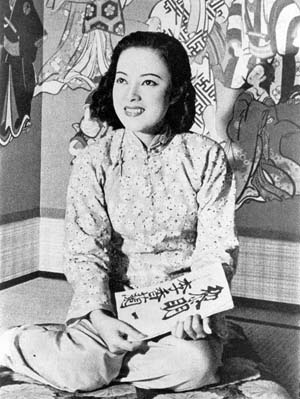
- Let us hear this song and other songs we heard from the Japanese broadcasting.
Click here.
-
Yamaguchi Yoshiko was born in 1920, and was known as Yi Hyang-Ryan to
Koreans. She was a singer and actress. She was also in China (Manchu) during
the war. She starred in the movie entitled "Shina-no-Yoru." In her movie,
she sang "Shina-no-Yoru." However, in Japan after the war, she sang
-
Hamabe-no Uda. Beautiful song.
- Kojo-no Tsuki, she sings.
One of the most beautiful Japanese songs. In this video, she sings for the
home-sick Japanese soldiers in China.
-
Le Lai Xiang, Chinese song in all Asian countries.
-
Another video by Yoshiko.
- As an actresses, she starred in a Japanese movie entitled
"Shina-no Yoru"(China Night) and sang
the title song.
-
Click here for her personal history.
- In 1945, after the war, she came back to Japan and became a politician.
She became elected to become a member of the Japanese Parliament.
-
Hamabe-no Uda. Beautiful song.
- Ginza-no Kan-Kan Musume (Can-can girls of Ginza). One of the most popular songs in Jpan after 1949.
- The concept of Can-Can Girls came from Paris.
Click here for the history of this form of art. This art consists of energetic
dances by a group of half-naked girls.
In Japan, this form of art was introduced after 1945 to entertain American troops who occupied Japan after the end of World War II. The Can-Can theaters appeared at the Ginza district of Tokyo, and Japanese started producing this form of art. Those creative Japanese produced their own forms of dancing and singing.
Among the songs they produced, the most popular song was entitled "Ginza-no Kan-Kan Musume" meaning "Can-can girls of Ginza."
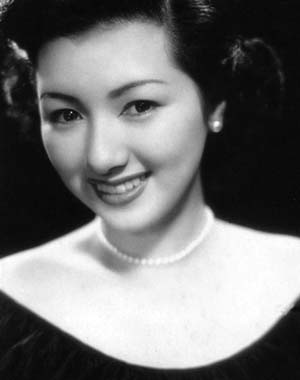 Takamine Hideko
Takamine Hideko
-
Takamine Hideko was born in 1924. She was an actress and played major roles
in popular films in Japan. She was also an excellent singer.
In 1949, she sang Ginza-no Kan-Kan Musume (Kan-Kan Girls of Ginza, Tokyo).
-
Old-fashioned Record Player. Photo of the 78rpm record.
-
Misora Hibari sings. Who was Hibari?
Click here.
- Younger
Japanese singer sings the same song. Her name is
Mizumori Kaori born in 1973 when
Japan became prosperous.
This song introduced was in 1949, and it played an important historical role in Japan. After the disastrous defeat in the war in 1945, Japanese people felt hopeless about the their futures. This song played a role in cheering them up. They started making money when Americans used Japan as the logistical base for the Korean War (1950-53).
- Here is
a party scene with this song.
- This song was very popular among Korean boys and girls during the Korean war years (1950-53).
They heard this song from the radio signals from Japan.
- Where is Ginza? Click here.
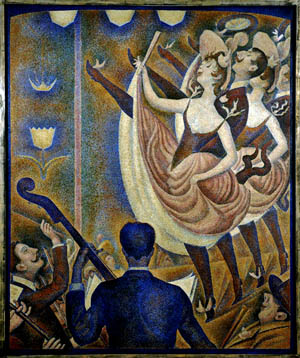 Can-can girls in Paris during the 19th Century.
Can-can girls in Paris during the 19th Century.
- The concept of Can-Can Girls came from Paris.
Click here for the history of this form of art. This art consists of energetic
dances by a group of half-naked girls.
- Takamine Mieko
was born in 1918. She was an active singer and actress. She sang songs for
the Japanese soldiers in the battle fields before 1945. She maintained her
active life until she died in 1990. Let us hear her songs.
- Kohan-no Yado was
a very popular song before 1945, and remained so after the war. This song
was very popular among Koreans.
- Kohan-no Yado,
the original recording. Kohan-no Yado means a lake-side summer house.
-
Wakare-no Tango, Farewell Tango.
-
Passionate Rumba.
-
Bride from the South.
- with a male partner, she sings.
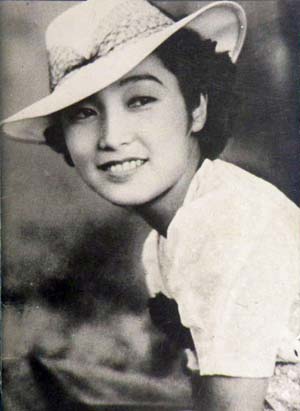 Takamine Mieko
Takamine Mieko
- Kohan-no Yado was
a very popular song before 1945, and remained so after the war. This song
was very popular among Koreans.
- Futaba Akiko was born in 1915,
and started her singing career in the 1930s. Unlike other Japanese singers, she sang
Western-style songs. I liked her songs. Let us hear some of them.
- Sayonara Rumba
(farewell rumba).
- Francesca-no Kane
(bells of Francesca).
-
Mizu-Iro-no Waltz (water-color waltz).
-
Yoru-no Platform (evening platform 1947)
- Click here for more Futaba Akiko songs.
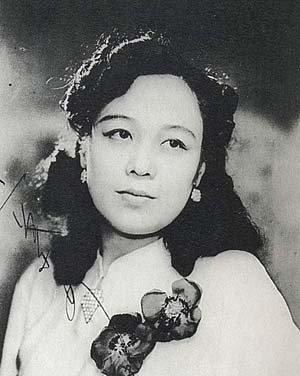 Futaba Akiko
Futaba Akiko
- Sayonara Rumba
(farewell rumba).
-
Fujiyama Ichiro was born in 1911, was a respected male singer. He sang many songs
before and after 1945. Among them, his
moved the hearts and minds of all Japanese men and women, who went through the painful war years against China and America (1933-45).
The story of the song is about a man who came back from the battle field after the war in 1945.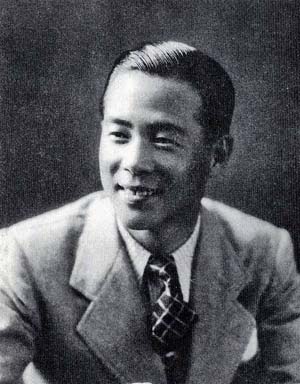
During the war, the usual story is that men go out to the battle and many of them die. Their wives become sad.
However, in this case, a Japanese man from Nagasaki comes back alive after the war. He finds out his wife died from the nuclear bomb on Nagasaki. Very sad story.
-
Click here for the same song by a female voice.
-
Two female singers.
-
Ginza Serenade by Fujiyama Ichiro.
- Tokyo Scenes
during the Showa era (1947, after the war).
- Fujimura sings with Watanabe Hamako. They produced this song in 1978.
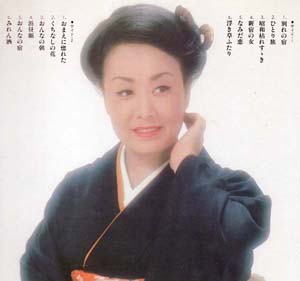
-
Click here for the same song by a female voice.
- While these singers were known during the war period before 1945, a new history-making
singer emerged after 1945. Her name was
Misora Hibari (1937-1989) . My
Japanese friends are telling me that her grandfather was a Korean.
- Here is
one of her early songs.
- She sang many song to make Japanese happy. Here is her last song
Kawa-no Nagare-no Yoni (As the river flows).
- Her songs are still popular among young Japanese. Here is her
her musical biography.
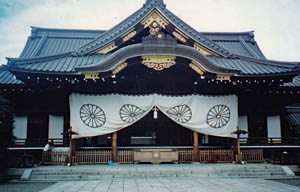
-
Main Prayer Hall at the Yasukuni Shine in Tokyo. I was there in 1994 to take this photo.
- She sings
Kudan-no Haha, a sad wartime song about a Japanese mother whose son comes back from the
battlefield in an ash box. The box is transported from Tokyo's Ueno railway station
(a secondary station) to the
Yasukuni Shrine (cemetery), located at the Kudan district in Tokyo. I was there
to take this photo in 1996.
- She sings a Korean song in Japanese.
- Here is
one of her early songs.
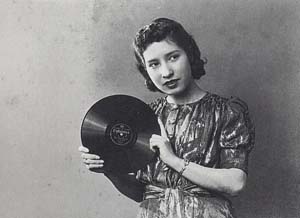
|
The AFKN (Armed Forces Korea Network)
-
was the radio station for American troops in Korea. The network called itself
The Voice of Information and Education.
-
This radio was for the American soldiers in Korea. Since it is an open
broadcasting, Koreans could pick up the signal freely. It thus served
educational purposes to Korean students. I learned English and music
from this AFKN station. This station had the program
called "Symphonietta" every afternoon for classical music, such as
those composed by Beethoven, Brahms, Tchaikovsky, et al.
- As for the entertainments, the station sent out songs popular in their own
country, the United States. Let me list some of their songs which became
popular among Koreans.
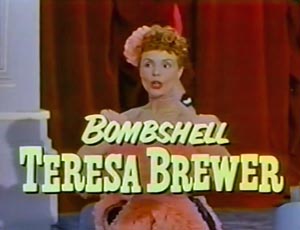
- Teresa Brewer, born in 1931
- Till I waltz again with you.
-
Sentimental Journey.
-
Let me go.
-
Dream a little dream of me.
-
If you want some loving, let me know.
- Let me go, Lover
- Music, music, music.
- Let me go, Lover
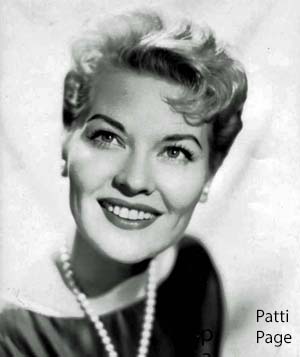
- Till I waltz again with you.
-
Patti Page, born in 1921.
- I went to your wedding
- I went to your wedding waltz
Version.
-
Happy to remember.
- Changing Partner
- Tennessee Waltz
-
Mocking Bird Hill.
- Let me call you sweet heart.
- I went to your wedding
- Les Paul and Mary Ford
- Eddie Fisher, born in 1928.
-
Oh My Papa, by Jim Nabor, known as Gomer Pyle.
- by Connie Francis.
-
Oh My Papa, by Jim Nabor, known as Gomer Pyle.
- copyright@2022 by Y. S. Kim, unless otherwise specified.

How did I talk to Einstein? 
I received my PhD degree from Princeton in 1961, seven years after high school graduation in 1954. This means that I did much of the ground work for the degree during my high school years.- Click here for my high school diary.
- Click here for my home page.
- Princeton page.
- Einstein page.
- Travel around the World.
- Style page.
- Click here for my photo-biography
- Click here for my high school diary.
- I learned how to squeeze the circle to get an ellipse at a temporary
campus in Busan (south-eastern costal city), during the years of
Koren War (1950-53)

This figure allows me to construct the following table. 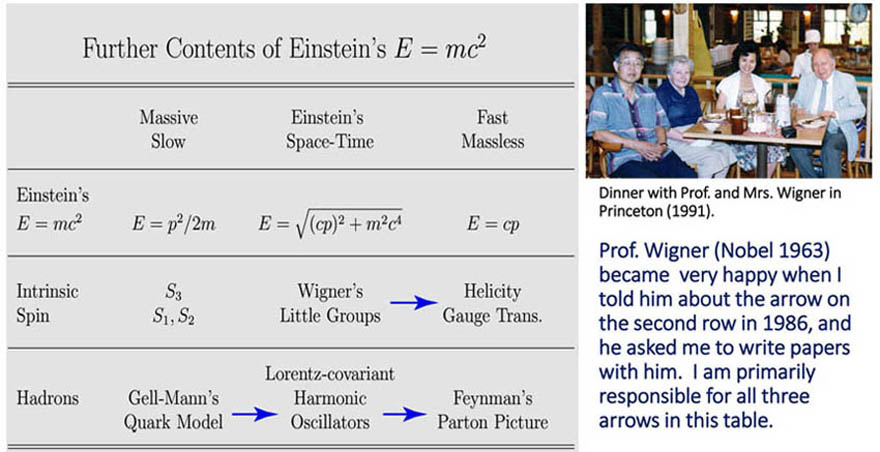
In terms of the language understandable to everybody, the above table means this genealogy. 


